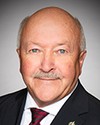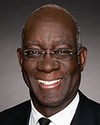That is a great question.
It's absolutely correct that the research that has been done does indicate that women release for medical reasons more frequently than men, and, as you alluded to in the question, we do see patterns of higher rates of musculoskeletal injuries in women than men. However, some of this data is actually balanced off by other studies that show things that are slightly different. For instance, we have studies that show that females experience no more acute injuries or repetitive strain injuries than males.
We have patterns that we're starting to understand, but we see that we simply need to learn more about the details of why these patterns are there, and then, of course, how best to address them once we understand them more fully.
That leads into the second part of your question about what we are doing about it. I do think the first thing we're doing is trying to understand better, so the actions we do take actually get to the root of the problem. However, having said that, we are doing concurrent activity; we're not just waiting for the research and health surveillance information to roll in. One excellent example is the work the Canadian Forces morale and welfare services is doing with respect to tailored exercise programs for women CAF members to help them reach their occupational goals, but it's also things like helping them get back to their occupational fitness as quickly as possible after having a baby. Also, inherent in that is, of course, avoiding injury.
I'll just throw out as an example that, really, it's the research leading to targeted interventions, but in the meantime doing what we can to optimize....




